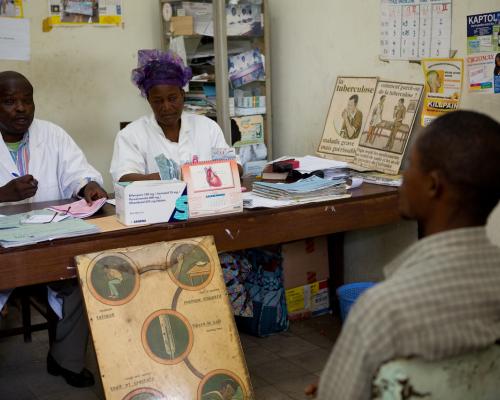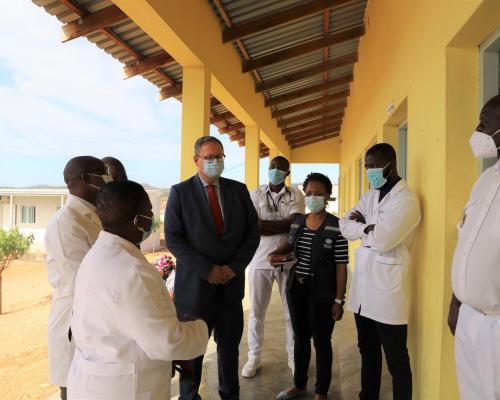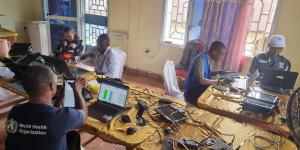Sierra Leone sustains digital health gains through nationwide health facility device troubleshooting for eIDSR
Freetown - In a major step to sustain gains in digital disease surveillance, Sierra Leone has completed another successful round of nationwide troubleshooting of health facility devices used in electronic Integrated Disease Surveillance and Response (eIDSR). Conducted in May and June 2025, the technical exercise covered all 16 districts and aimed to enhance the performance and sustainability of the country’s electronic reporting system.
The eIDSR system, a District Health Information Software 2 (DHIS2)-based application, enables real-time transmission of epidemiological data from health facilities to district and national levels via mobile devices. Since its full rollout in 2019, the system has significantly improved data timeliness and completeness, consistently exceeding 95%, and helped shift Sierra Leone from a paper-based to a centralized digital system, strengthening emergency response capacity.
During this round of troubleshooting, technical teams from the Ministry of Health (MoH), the National Public Health Agency (NPHA), WHO, and AFENET collaborated to resolve emerging technical issues with health facility devices in over 1,500 public and private health facilities. The teams focused on re-installing and updating electronic reporting applications, replacing inactive SIM cards, and configuring mobile devices for optimal functionality. Facilities with major hardware damage such as broken screens or charging issues were flagged for national-level follow-up.
A critical part of the exercise involved updating the national database for facility devices and reassociating all facility gadgets to the MoH’s Mobile Device Management (MDM) system for enhanced security and monitoring. The initiative also prioritized capacity building, with District Health Management Team (DHMT) staff trained in basic troubleshooting and maintenance to ensure local-level continuity.
Notably, the proportion of facilities actively submitting weekly surveillance data through eIDSR increased from 70% to an anticipated 85% following the exercise. The intervention aligns with national efforts under the Health Sector Post-Ebola Recovery Plan (2015–2020), which identified surveillance and information systems as a strategic priority.
"Routine technical supervision and troubleshooting are essential to ensure that no facility is left behind in digital transformation," said Stephen Sesay, WHO’s IDSR Data Manager and eIDSR Specialist. "WHO remains committed to supporting Sierra Leone in sustaining its digital transformation for stronger health security."
"This exercise is a key milestone in our ongoing journey to digitize and strengthen Sierra Leone’s health information systems," said Mohamed Bamoi Kamara, Informatics Lead at the Ministry of Health. "By empowering DHMT staff with troubleshooting skills and improving device functionality, we are building a more resilient and self-sufficient surveillance system."
This nationwide effort reaffirms Sierra Leone’s position as one of the first countries in Africa to achieve full-scale rollout of an electronic disease surveillance system across both public and private health facilities bolstering national resilience against future public health threats.



